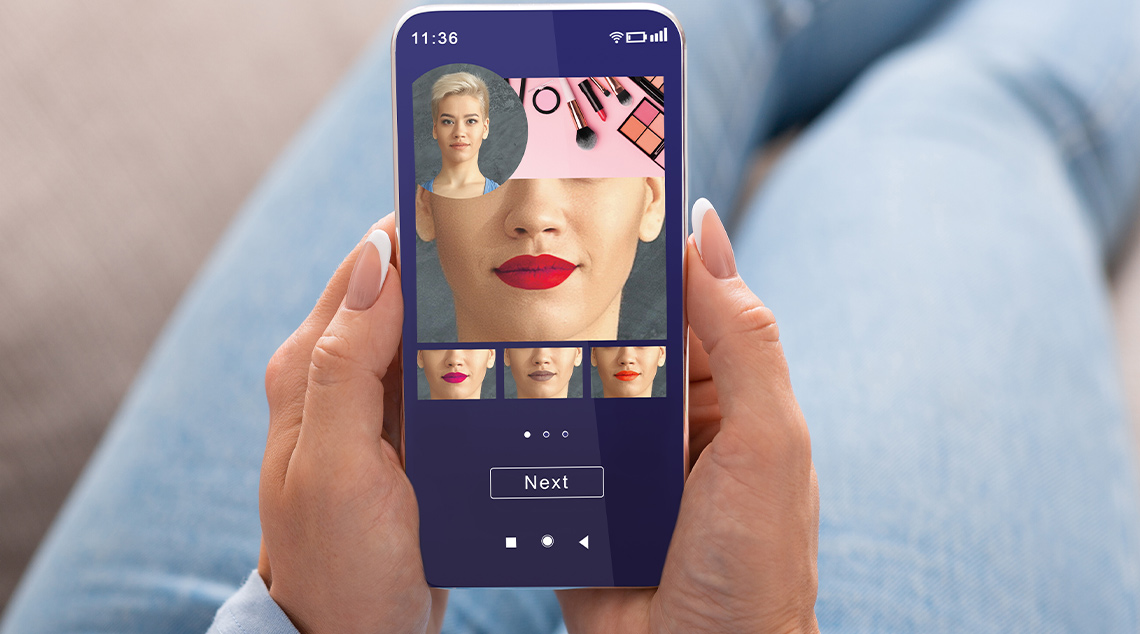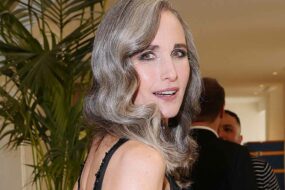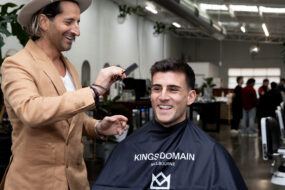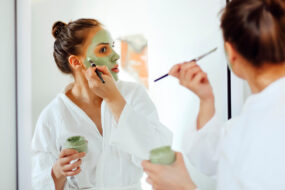How AI is going to level up your beauty game
AI technology and augmented reality are already having a profound impact on the way we work, and now virtual beauty is influencing how we consume cosmetics.
If increased demand for AI-fuelled technology has taught us anything, it’s that people don’t mind delegating tasks to machines, especially if it saves them time in the process.
The same holds true in the world of beauty, which can be overwhelming territory to navigate for even the most seasoned of shoppers.
In an effort to simplify the consumer experience and make it less intimidating, cosmetic giants are investing in a variety of innovative virtual tools that take the guesswork out of purchasing beauty products.
One major beauty brand leading the charge is L’Oréal, and according to chief data analytics officer Varun Verma, much of it’s driven by the desire to improve the consumer experience.
“Virtual and AI-integrated technologies offer consumers personalised experiences, such as try-on tools, skin analysis apps, and personalised product recommendations,” Varum says.
“These technologies allow consumers to explore and experiment with products in a virtual environment, enhancing their shopping experience and increasing engagement.”
View this post on Instagram
What exactly is virtual beauty?
Still in its infancy, virtual beauty is best summarised as consumer education, product endorsement, and increased accessibility to make-up, hair and skincare products through an exclusively digital landscape.
Also dubbed “beauty tech”, AI and augmented reality (AR) technologies allow consumers to play in the metaverse, where they can do everything from virtually trying on (VTO) make-up and purchasing beauty products to upskilling their application techniques – all without leaving the comfort of home.
“Virtual try-on technology offers more realistic and accurate representations of how products will look on the user’s face,” Varun says.
“These advancements often involve integrating AI and AR technologies to create a seamless, immersive try-on experience.”
View this post on Instagram
What makes virtual beauty so appealing?
The concept of virtual beauty might not resonate with everyone just yet, but we only have to look at how quickly consumers adapted to online shopping and how much pulling power beauty gurus bring to understand its appeal.
Social media has also expanded into a digital sales point in its own right, further cemented by the development of shoppable content on Instagram and YouTube, as well as the development of concepts such as TikTok Shop and liketoknow.it (LTK).
While the COVID-19 pandemic had a detrimental impact on many industries, it actually provided fertile ground for virtual beauty and helped to fast-track concepts and processes such as virtual beauty consultations, online make-up courses, and VTO-powered apps.
Retail stores have became increasingly reliant on VTO technology to push beauty sales at the height of lockdowns, and today the technology remains a strong sales tool.
Google is also investing in VTO technology and expanding its stake in AR, with consumers able to virtually “try on” different foundations, hair dyes, lipsticks and more directly through the search engine’s shopping feature.
View this post on Instagram
What are the downsides of virtual beauty?
While virtual beauty has been a herald of technological innovation, it’s also faced its fair share of criticism, particularly in terms of helping to popularise beauty filters.
Increasingly common on social media and in virtual meetings, or on TikTok where these filters are presets, augmented filters are said to further skew perceptions of beauty and impact self-esteem.
View this post on Instagram
What’s next in the world of virtual beauty?
The metaverse continues to build momentum as the next frontier for shoppable online content, and the beauty industry looks set to be a key player.
Out-of-this-world shopping experiences
Major beauty brands such as Bondi Sands, Charlotte Tilbury and Vital Glow have created interactive virtual worlds in the metaverse digital sphere and even offer virtual storefronts, all of which are designed to entice consumers to a shopping experience that’s quite literally out of this world.
Rising-star virtual influencers
Another emerging component of virtual beauty are virtual influencers, or digital avatars.
US-based “robot” Lil Miquela and “unreal star” Alara X from Istanbul are two of the most popular digital avatars in Western media.
As with real influencers, the jury’s still out on just how many of their followers are real and not bots (oh, the irony).
But it’s very clear that Gen Z-adjacent concepts are becoming increasingly popular within virtual beauty.
More on the future of beauty and the latest trends:
- Why beauty avatars are rocking the latest make-up looks
- 5 must-know beauty trends for 2024
- The hottest new beauty looks of the future
Written by Charlotte Brundrett.




